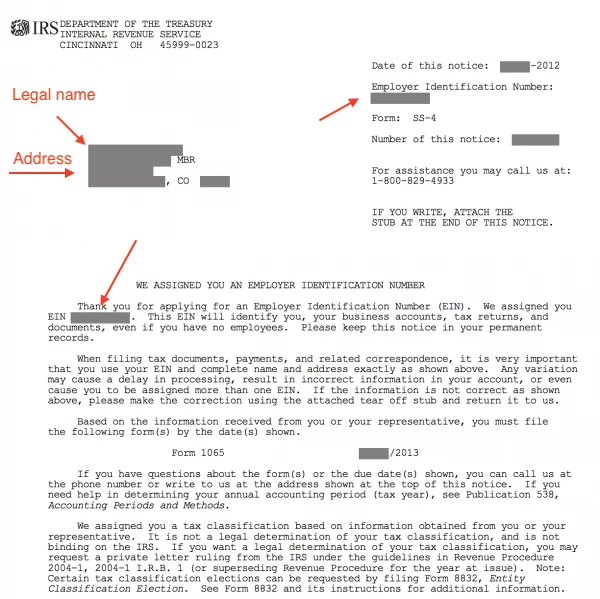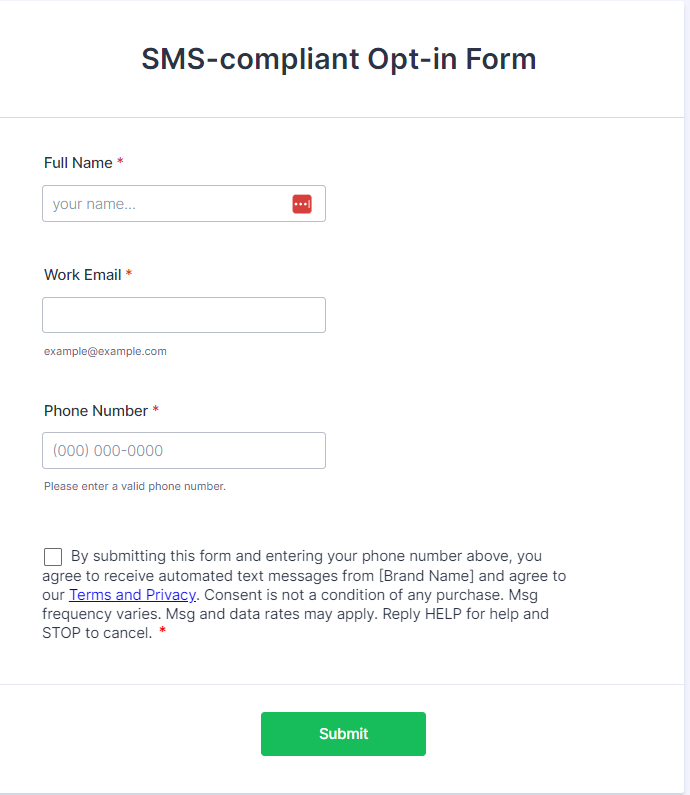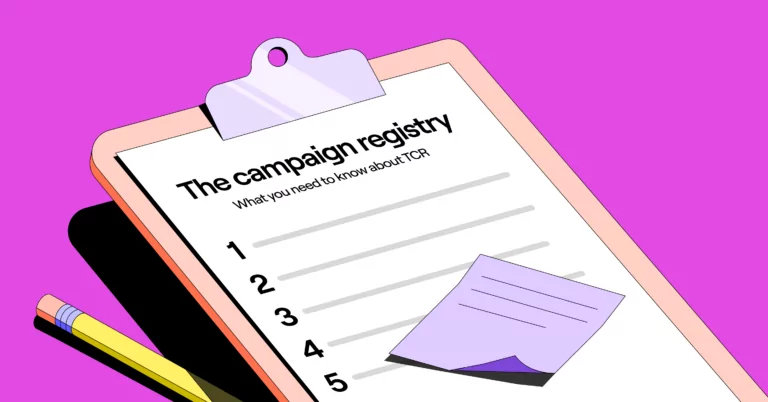So you’re ready to launch your first SMS campaign on a virtual number. Before you do, you’ll have to go through The Campaign Registry (TCR) — one of the third parties chosen by major US cell carriers to review registration information so that any businesses using a virtual phone number adhere to emerging A2P 10DLC regulations.
If the mention of TCR leaves you with questions, good news: this guide covers everything you need to navigate the registration process pain-free.
You’ll learn:
- What TCR is and the role TCR plays in A2P 10DLC
- What you need to register your campaign
- The three must-haves for proper registration
Let’s start by defining our terms.
What exactly is The Campaign Registry?
The Campaign Registry is a third-party organization that reviews 10DLC applications for businesses using a virtual phone service (like OpenPhone). TCR was hand-picked by mobile network operators — think T-Mobile, AT&T, and Verizon — to filter out bad actors and prevent unwanted spam messages to customers.
When you register for 10DLC, you do so directly through your virtual phone number provider. Once you submit an application, your provider submits the information to TCR. TCR then reviews the information (more on this later) and provides an all-clear to text from your virtual phone number(s) .
Keep in mind there may be additional steps to register depending on your messaging service provider. OpenPhone’s process is intuitive and straightforward, as we’ll get into later.
And what do I need to know about A2P 10DLC?
A2P 10DLC stands for ‘application-to-person 10-digit long code.’ This is a complicated way of saying you’re sending business texts from a virtual phone application via a standard 10-digit number (think something like 832-456-7890).
All business-related texts sent via A2P 10DLC require registration with The Campaign Registry. As mentioned earlier, TCR and other third-party entities review A2P 10DLC applications to ensure your business is observing SMS compliance laws. If everything you’ve submitted is up to code, they’ll add your business to their database and ensure better message deliverability.
You’ll also be able to send a higher volume of messages than before regulations were in place..
Why is TCR registration required?
Mobile network operators (also known as MNOs) do their best to protect customers from unwanted spam. But with more than 19 spam texts per person per month in the US, spam filters alone aren’t enough to stem the tide.
Three of the largest US carriers — T-Mobile, AT&T, and Verizon — teamed up with the Federal Communications Commission (FCC) to find a long-term solution. In March 2023, the FCC issued an order to mobile carriers to block certain text messages that are “highly likely to be illegal.”
And thus, TCR registration was born.
What happens if you don’t register?
Without registration, most virtual phone providers won’t let you text US numbers at all. Don’t want to deal with TCR registration for any provider that allows this? Be prepared for hefty fines.
If you try anyway, you could face TCPA (Telephone Consumer Protection Act) fines ranging from $10 to $1,500 per message.
You’ll also have poor (and possibly nonexistent) deliverability rates. There’s a good chance your messages won’t reach your clients at all.
The bottom line is you can’t bypass registration if you’re texting US customers.
But it’s not as difficult as it looks. Here’s what you need for a successful registration.
3 must-haves for TCR registration
TCR’s registration process isn’t always the same between platforms. What you submit and where you submit it depends on your campaign service provider.
That said, a few fields stay the same (or at least look similar between application forms).
Let’s break down the most common fields so you can get a better feel for what to expect.
1. Brand information
Brand information translates to ‘company information,’ specifically what you used when you registered your business (like your EIN or other business identification, legal name, and address).
If you’re attempting to complete registration after signing up for an OpenPhone account, you can take one of two paths to validate business information.
The sole proprietor path is for you if:
- You don’t have a business EIN or other form of company tax identification
- You have a cell number with a country code of +1
- You have a valid US or Canadian address
If this applies to you, you can follow our step-by-step guide to registration for solopreneurs.
If you have an EIN or other form of business tax identification (if you live outside the US), you’ll need to take the second path: Low Volume Standard.
Here’s what you’ll need if you’re registering a business through OpenPhone.
Legal business name
Make sure it matches the name on your EIN or business registration documentation. You can double-check this by entering your EIN into the HIPAASpace lookup website.
If your business is based outside of the US, you can use other lookup websites:
- Europe: VIES VAT number validation
- Australia: ABN Lookup tool
- New Zealand: NZBN lookup tool
Business type
You can select from:
- Partnership
- Corporation
- Co-operative
- Limited Liability Corporation
- Non-profit Corporation
- Sole Proprietorship
Company type
Here, you can select from:
- Private
- Public Profit
- Non-Profit
- Government
Business registration ID type and number
You need to fill out at least one of the following:
- EIN
- CCN
- Company Number
- ACN
- Corporate Identity Number
- VAT Number
- VAT Registration Number
- Registration Number
Pro tip: For your business to be verified, your EIN or Tax ID needs to match the legal name on file with the governing entity. If you receive an EIN from the IRS, for example, the EIN, business name, and address you supply during registration must exactly match what’s shown on the CP-575 form sent to you by the IRS. Incorrect EIN formatting can also lead to rejection.

Industry
Choose the industry category that best describes your organization.
Website
Include the full URL of your website, such as http://www.xyz.com or https://www.xyz.com.
Before applying, make sure your website is fully functional and the URL does not exceed the 100-character limit. If you don’t have a business website, you can include your business’s social media page.
Pro tip: TCR’s vetting process includes a website review. Your website has to be secure and have a privacy policy (which is mandatory on all websites except for sole proprietors). Your privacy policy must disclose whether you collect Personally Identifiable Information (PII). If it does, you must also explain how it’s used and how users can opt out. You must also clearly state you don’t share or sell PII to third parties.
Region of operation
Select the primary region you do business in: Africa, Asia, Europe, Latin America, or USA and Canada.
Business address
Enter the physical address associated with your business registration and/or tax ID.
Before moving on, make sure the following information matches your records:
- Street
- City
- State
- Province
- Region
- Postal Code
- Country
Business contact
For TCR’s records, enter your best business contact’s name, email, phone number, and job title.
Keep in mind this isn’t the billing contact for the TCR registration fee. OpenPhone will bill you directly based on the credit card address we have on file.
2. Campaign information
Campaign information refers to the context of your text messages with customers. You’ll need to explain the types of messages you send (such as sales demo follow-up messages or appointment confirmations), give SMS-compliant examples of those messages, and explain how you collect consent from customers to send those messages.
Messaging details
Describe the type of messages you typically send. Keep in mind vague or short responses can result in your registration being rejected by The Campaign Registry. Message use cases can include (but are not limited to):
- Customer support
- Two-factor authentication (2FA)
- Marketing messages
- Account notifications
- Appointment confirmations
Message examples
Provide at least two sample messages based on the kinds of texts your business typically sends. You should have a sample message for each type. Make sure you indicate templated fields if you plan to send templated messages. We also recommend having opt-out language in at least one of your sample text messages.
If you send promotional messages, for example, your sample might look something like this:
[Business name]: Happy holidays, [name]! To celebrate the magic of the season, we’re offering free shipping on your next order. You can browse our entire collection here: [URL]. Message and data rates may apply. You can view our terms and privacy policy here: [URL]. For help, reply HELP. To opt out, reply STOP.
If you send informational messages, you might submit a sample that looks like this:
[Business name] would like to send you text messages regarding order confirmations and shipping updates. Message and data rates may apply. View our terms and privacy policy here: [URL]. To confirm, reply Y. To opt out, reply N.
Other compliant message examples
TCR requires compliant message examples to prove your business is following SMS compliance guidelines.
These messages must:
- Have opt-in and opt-out language
- Include your legal company name
- Use the same email address, website address, and company name in your application
If you miss one of these things, your application may be rejected.
Need help visualizing this? Check out the examples below:
Customer support
[Name], this is [your name] from customer care at [business]. I just got your ticket request for [situation] and saw you opted in to SMS messages. Reply Y if you are still comfortable with me texting this number. Message and data rates may apply. You may view our terms and privacy policy here: [URL]. For help, reply HELP. To opt out, reply STOP.
Two-factor authentication (2FA)
[Business]: Your security code is [number]. It expires in [number] minutes. Do not share this number with anyone. To stop receiving 2FA messages, reply STOP. Reply HELP for help. Message and data rates may apply. Terms and privacy policy here: [URL]
Marketing messages
[Business]: It’s our biggest sale of the year, [name]! You’re invited to shop our collection of [items], now 10% off. Grab your coupon here: [URL]. Message and data rates may apply. View our terms and privacy policy here: [URL]. Reply STOP to stop, HELP for help.
Account notifications
[Business]: There is new activity on your [type of account]. To log in, tap this link: [URL]. Reply HELP for help and STOP to stop. Message and data rates may apply. Terms and privacy policy here: [URL]
Appointment confirmations
Hey [name], this is [your name] from [business]. We’re looking forward to seeing you on [date/time] for your appointment. To stop receiving reminders from us, reply STOP. To get help, text HELP. Message and data rates may apply. Terms and privacy policy here: [URL]
Sales follow up
Hey [name], [your name] from [business] here. You filled out a quote form and asked us to message you at this number. Reply Y for yes, N to opt out. Text HELP for help. Message frequency varies. Message and data rates may apply. Read our terms and privacy policy here: [URL]
Fill appointment slot
[Business]: A new appointment slot has just become available for [date/time]. If you would like to reserve this time, please reply Y. To unsubscribe to these messages, reply STOP. Reply HELP for help. Message and data rates may apply. Terms and privacy policy here: [URL]
Customer feedback surveys
Thank you for doing business with [business]! Would you be willing to provide us with feedback about your experience? Leave a review for us here: [URL]. To unsubscribe from our messages, reply END. Reply HELP for help. Message and data rates may apply. Terms and privacy policy here: [URL]
Payment reminders
[Business]: This is a friendly reminder that [name] owes [amount] on or before [date]. If you have any questions, please reply to this message. To end these reminders, reply END. Reply HELP for help. Message and data rates may apply. Terms and privacy policy here: [URL]
How you collect consent
Here, you describe your opt-in method(s) and ensure they’re documented on your company website.
SMS opt-in methods can include:
- Verbal consent
- Physical form
- Web form
- Consent via text
- QR code*
*OpenPhone does not support mass texting marketing lists and does not have an option for using a QR code to show a contact has opted in to your text messages.
To help you visualize this, here’s a compliant web opt-in form we created.. Notice the disclosure language: “Message frequency varies. Message and data rates may apply. Reply HELP for help and STOP to cancel.” There is a templated space for a link to your terms of service and privacy policy pages, which is required by TCR.

Download our compliant webform from Jotforrm
Keep in mind if you indicate your contacts opt in from a web form, that needs to be live on your website. Opt-in forms on your website that don’t have SMS disclosures and opt-in language can result in a rejected campaign.
Learn more about compliant SMS opt-in methods and get templates for your specific use case.
Associated fees with A2P 10DLC registration
You should know A2P 10DLC registration involves a few fees to prepare for, including:
- Carrier review and setup fee: TCR collects a one-time $19 manual review fee to evaluate submitted text samples, campaign information, and other registration details you provide in your carrier registration application.
- Messaging fee: If you have Low Volume Standard status with major US carriers, TCR will charge you $1.50 per month. Sole Proprietors pay $2 per month, and non-profit organizations pay $3 per month.
- Resubmission fee: If your application gets rejected, a $15 fee goes to the carrier partner of your virtual number provider. Read our guide which explains common reasons for 10DLC registration rejections to learn how to avoid them.
Keep in mind 100% of these fees go to TCR and its related third-party entities. This enables them to fairly review your application so you can stay in good standing with major US cell carriers.
How OpenPhone can help
Registering SMS campaigns with TCR can seem overwhelming at best. The good news is OpenPhone makes it easy to know what to do with our in-app carrier registration process. Whether you’re a solopreneur or a growing small business, you can navigate the registration process as painlessly as possible if you have virtual numbers with OpenPhone.
But most of the benefits come after TCR registration — our features keep you compliant without even trying.
For example, you can:
- Save and send compliant messages (like opt-in, opt-out, and opt-in confirmation texts) with customizable snippets
- Add additional local numbers to your workspace after successfully registering with TCR (you won’t need to register again)
- Complete toll-free verification straight from the OpenPhone app if you have a toll-free number in your OpenPhone workspace
- Schedule texts during business hours (between 8 AM and 9 PM to comply with TCPA requirements) without needing to press send at a specific time
Interested to see how OpenPhone works? Check out our product demo.
